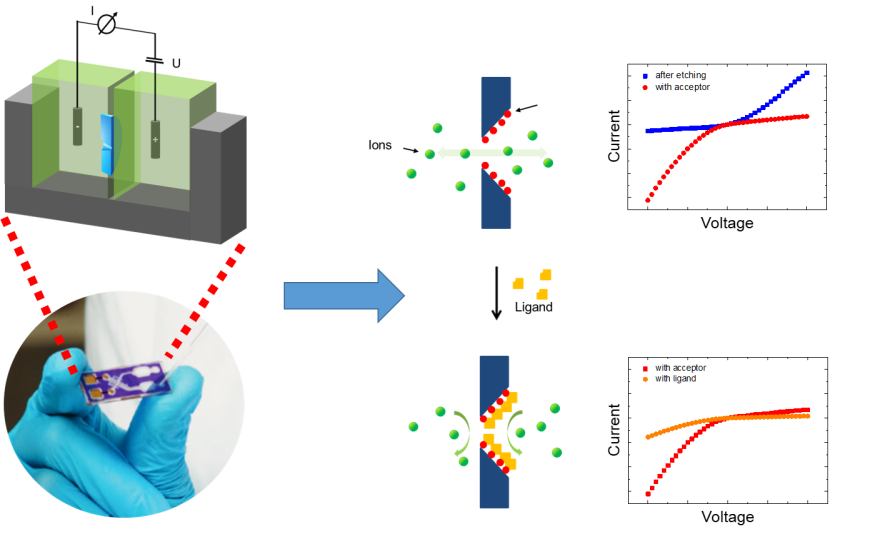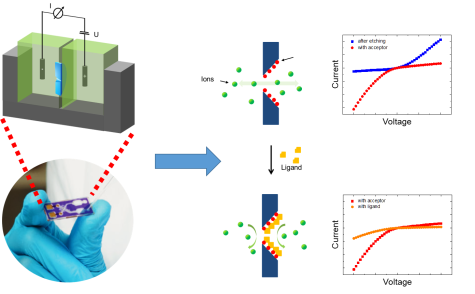Prof. Dr. Wolfgang Ensinger
Our goal is to develop a new generation of sensors that are very sensitive and powerful, based on their biological role models.

Biological and Synthetic Nanopores
Nanopores in biological cell membranes ensure mass transfer from the inside to the outside and vice versa. These transport systems are selective and substance-specific depending on the membrane. However, due to their nature, biological nanopores are very unstable outside of their natural environment, so that the sensory use in analysis is limited.
Inspired by nature, synthetic nanopores are functionalized with a chemical or biological sensor on the pore surface in order to imitate the substance-specific mass transport of biological nanopores. In contrast to biological nanopores, synthetic nanopores in plastic films are thermally, mechanically and chemically much more stable and can be used in technical processes.
Fabrication of Synthetic Nanopores
The fabrication of synthetic nanopores in polymer films (e.g. PET, PI) is carried out in the first step by irradiation with heavy ions with the formation of damaged zones and subsequent chemical etching. Depending on the etching process and duration, different pore shapes and diameters down to the nanometer scale can be created. This enables use both in sensor technology and in filtration technology.
In the case of PET, the etching process creates free carboxyl groups which can be functionalized by coupling chemistry. The ion transport through the nanopores is detected by means of current-voltage measurements.


Any change in ion transport depending on the surface charge of the nanopores and the pore diameter can be demonstrated using current-voltage curves. This serves on the one hand as a proof of a successful functionalization of the pore surface and on the other hand it is possile to detected with the help of the bound sensor whether a certain ligand is present in the electrolyte and also at which concentration.
The functionalized nanopores can be built-in a chip for sensor applications. A first prototype of such a chip was developed in a collaboration with the Department of Electrical Engineering and Information Technology.






